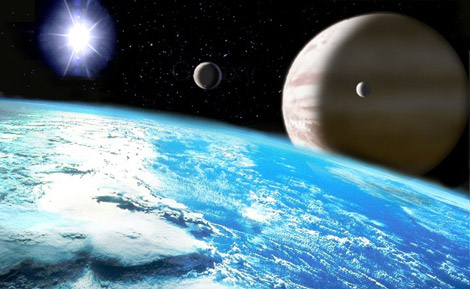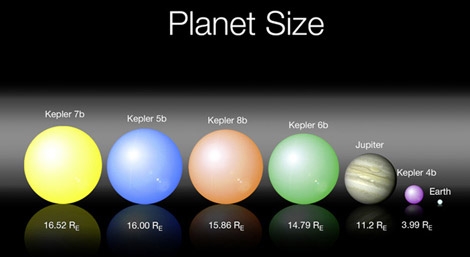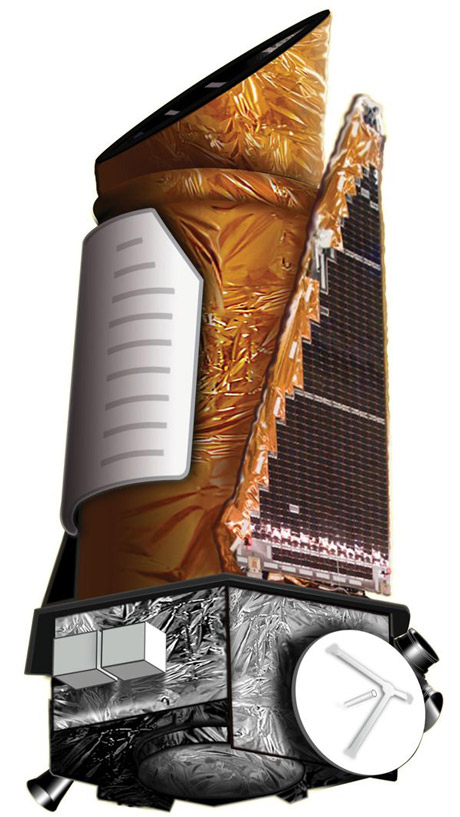Searching for Alien Earths: The Kepler Space Telescope

Earlier we blogged about Earth’s hot twin, an extrasolar planet that bears striking similarities to our home sweet home. Whether they are scorching gas giants or frozen ice queens, these alien Earths appear to be the next hot focus for cosmological research. That’s where NASA’s newest space telescope comes in. Launched last March, the Kepler Mission has already detected five Earth-like exoplanets (one of which apparently has the same density as Styrofoam!).
Here’s a size comparison of the five new planets in relation to Jupiter and Earth:

The objective of the Kepler space telescope is to find Earth-like planets in remote star systems: planets similar in size to Earth and orbiting their stars from a distance at which the temperature could theoretically support life. That range of temperatures must ensure that the planet’s bodies of water do not boil over, also do not freeze over. Or, as NASA scientist Bill Borucki puts it, it has to be in the “Goldilocks zone: not too hot and not too cold.” For more details about Kepler and what makes a planet able to support life, check out the follow video from NASA:

Kepler continuously observes 100,000 stars located between 600 and 3,000 light-years away, alert for the dimming that occurs when an orbiting planet passes in front of a star (like a solar eclipse). If the phenomenon occurs periodically every year, then the planet has a one-year orbit. Scientists hope that Kepler could find dozens of habitable planets over the next three to four years.

Above is the Kepler telescope, about 2.7 meters (nine feet) in diameter and 4.7 meters (15.3 feet) high.
Looking forward, photographing these planets in detail may be the next great challenge. Since Kepler was only built to detect small changes in the stars’ illumination, we would need a telescope more like Hubble to provide images of a distant planet’s surface. Once we’re able to take a closer look at these new Earths, who knows what we might find!

Filed under: Aerospace, e-News
Tags: Aerospace








